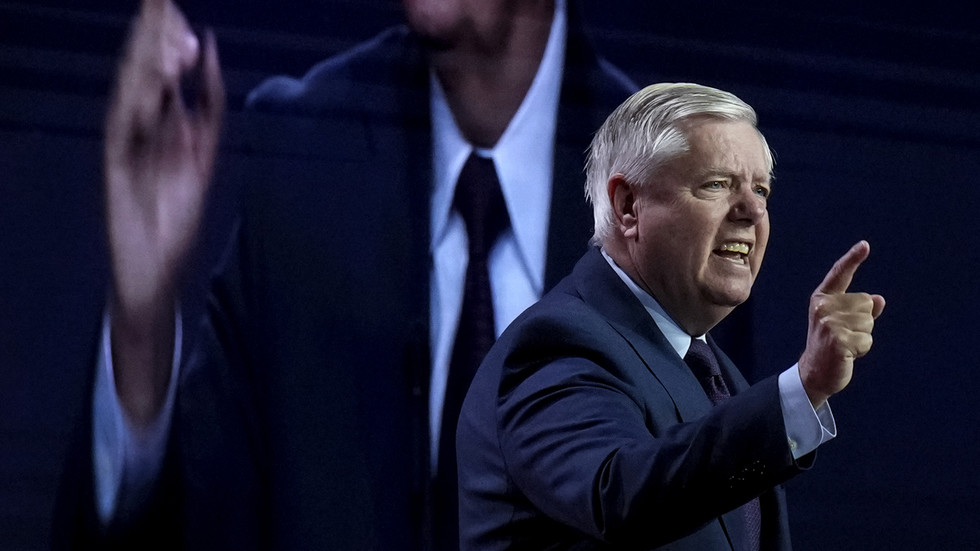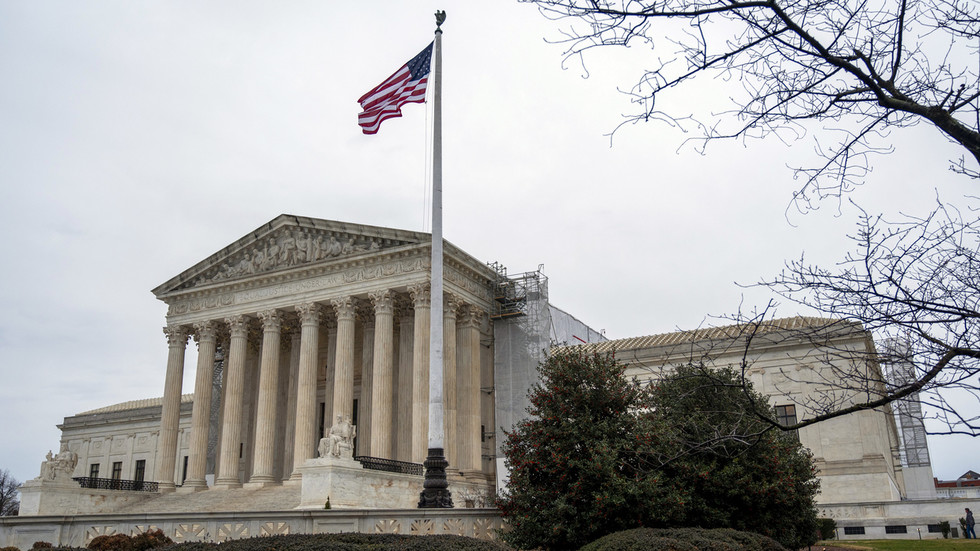Below is my column in the New York Post on the closing arguments scheduled for today in the trial of former President Donald Trump. The column explores the key elements for a closing to bring clarity to the chaos of Judge Juan Merchan’s courtroom.
Here is the column:
With the closing arguments set for Tuesday in the trial of former president Donald Trump, defense counsel are in a rather curious position.
There is still debate among legal experts as to the specific crime that District Attorney Alvin Bragg is alleging.
Trump’s lawyers are defending a former president who is charged under a state misdemeanor which died years ago under the statute of limitations. It was then zapped back into life in the form of roughly three dozen felonies by claiming that bookkeeping violations — allegedly hiding payments to Stormy Daniels to ensure her silence about a supposed affair with Trump — were committed to hide another crime.
But what is that second crime?
Even liberal legal analysts admitted that they could not figure out what was being alleged in Bragg’s indictment. Now, after weeks of trial, the situation has changed little.
Originally, Bragg referenced four possible crimes, though he is now claiming three: a tax violation or either a state or federal campaign financing violation. The last crime is particularly controversial because Bragg has no authority to enforce federal law and the Justice Department declined any criminal charge. The Federal Election Commission (FEC) did not even find grounds for a civil fine.
Judge Merchan has ruled that the jury does not have to agree on what that crime is. The jury could split into three groups of four on which of the three crimes were being concealed and Merchan will still treat it as a unanimous verdict.
The jury has been given little substantive information on these crimes, and Merchan has denied a legal expert who could have shown that there was no federal election violation.
This case should have been dismissed for lack of evidence or a cognizable crime. The jury will be reminded that the burden is on the government, not the defense.
However, the presumption of innocence is often hard to discern in criminal cases. Most jurors believe that clients are sitting behind the defense table for a reason. That is why many prosecution offices have conviction rates in the 80%-90% range.
That presumption is even more difficult to discern when the defendant is named Trump and the jury sits in Manhattan.
Three-legged Stool
A classic closing pitch by lawyers is to use a physical object like a three-legged stool. If any leg is missing, the stool collapses.
In this case, the government needs to show that there was a falsification of business records, that the records were falsified to conceal another crime and that Donald Trump had the specific intent to use such “unlawful means” to influence the election.
Even a cursory review of the evidence shows this case does not have a leg to stand on.
The First Leg: Falsification of Records
The dead misdemeanor that is the foundation for this entire prosecution requires the falsification of business records. It is not clear that there was such falsification or that Trump has any knowledge or role in any falsification.
Witnesses testified that Trump would sign checks prepared by others and that the specific checks in this case were signed while Trump was serving as president. Some of these checks, labeled “legal expenses,” were allegedly for attorney Michael Cohen to pay off Stormy Daniels.
Most importantly, Jeffrey McConney, the Trump Organization’s retired controller and senior vice-president, testified that it was not Trump who designated these payments as “legal expenses.” Rather, the corporation used an “antiquated” drop-down menu where any payments to lawyers were designated “legal expenses.” There is a plausible reason why payments to an attorney were listed as legal expenses.
The government also cites the designation of payments to Cohen as part of his “retainer,” which included reimbursement for the payment of the Daniels non-disclosure agreement. However, that designation was the result of discussions between Cohen and former Trump Organization CFO Allen Weisselberg, who is sitting in a jail cell in New York City. The government could have called Weisselberg, but did not.
The government has made a big deal over the fact that retainer agreements are supposed to have written contracts. However, that was the failure of Cohen, who was later disbarred as an attorney.
For a businessman like Weisselberg, monthly payments to an attorney could have seemed perfectly logical. Once again, there was no evidence that Trump knew of how the payments were denoted.
The Second Leg: The Secondary Crime
The government must also show that any falsification was done to further or conceal another crime.
This is where the defense needs to bring greater clarity to its own narrative. Trump’s team needs to drive home that a non-disclosure agreement is common in political, business and entertainment circles. The payment of money to quash a story before an election is neither unlawful nor unusual.
Indeed, Keith Davidson, Stormy Daniels’ attorney, described the NDA as routine and said that it was not hush money but a simple contractual transaction: “It wasn’t a payoff. It wasn’t hush money. It was consideration.”
This is where the testimony of David Pecker, the former publisher of the National Inquirer, was particularly damaging to the government.
Pecker detailed how killing such stories was a common practice at the National Inquirer and that he had done so for Trump for over a decade before he ran for president. He also killed stories for an impressive list of other celebrities, including Tiger Woods, Mark Wahlberg, Rahm Emanuel and Arnold Schwarzenegger.
Merchan has allowed the jury to repeatedly hear of “election violations,” while blocking a legal expert to explain that there is no federal election law violation. The payment of hush money is not a campaign contribution and, again, the federal government not only declined to bring any criminal charge, but found no basis for even a civil fine.
Had he been allowed to testify, Bradley Smith, the former Federal Election Commission (FEC) chairman, would have explained that, even if it were a campaign contribution, it would not have been needed to be filed until after the election — demolishing the notion that this was an effort to influence an election that would have run before any filing had to be made.
The defense has to hammer away on the fact that no one has testified that it was a federal campaign violation.
Various witnesses, including former Trump aide Hope Hicks, testified that Trump was motivated to protect his family from embarrassment. She recounted how Trump even “wanted me to make sure the newspapers weren’t delivered to their residence that morning.”
Pecker testified that he previously killed stories about Trump going back over a decade. That included stories that were demonstrably untrue, such as a claim of a doorman that he fathered a child out of wedlock.
In addition to being a married man, Trump was the host of a major television program subject to a scandal clause. He was also an international businessman. Given all of those interests, it is impossible to claim absolutely that the campaign was the reason for the NDA, which was chump change for a billionaire.
The Third Leg: Criminal intent
The government spent considerable time proving facts not in dispute. There is no dispute that there was a NDA or that Trump signed checks on these payments. It is like repeatedly telling a court that a driver drove 55 miles an hour down a highway and elected to change lanes with a signal. The intent is to convince the jury that somehow proving that an NDA was paid and that an affair occurred is proof of an offense. It is not.
The supervisor in charge of processing payments said that permission to cut Cohen’s checks came not from Trump, but from Weisselberg and McConney. Trump’s White House secretary, Madeleine Westerhout, testified that it was common for Trump to sign checks in the White House without reviewing them.
The entire basis for the alleged criminal intent is Michael Cohen, a disbarred lawyer and serial perjurer.
Yet even Cohen did not offer a clear basis for showing a criminal intent to use unlawful means to influence the election.
Everything Cohen described could be true and only show a desire to kill an embarrassing story before an election — again, not a crime.
Cohen described the mechanics on the payments, but the only person who discussed these payments in detail with Cohen was Weisselberg.
Even liberal experts on CNN admitted that Cohen was trashed on the stand. The only crime that was clearly established in this trial was the grand larceny that Cohen admitted to under oath (after the statute of limitations had run out). Cohen said that he stole tens of thousands from the Trump corporation, a crime far more serious than the dead misdemeanor or even the felonies alleged against Trump.
However, the most significant testimony by Cohen may be his latest alleged perjury in front of the jury.
Many of us guffawed when Cohen claimed that he secretly taped Trump to protect him and keep Pecker honest. No one can explain how that could possibly be true. If it were, he would have told Trump. There is nothing in the call that would have any impact on Pecker, and Cohen admitted to regularly taping others without telling them.
Another alleged perjury came with the key telephone call in which Cohen claimed Trump was informed that the Daniels deal was concluded. The defense showed that that 96-second-long call was to Trump’s bodyguard, Keith Schiller, in late October 2016. It was preceded and followed by text messages that clearly shows that the conversation was about a teenager harassing Cohen, not the NDA.
Other witnesses trashed Cohen as unprofessional, prone to exaggeration, bitter against Trump, at times suicidal over being denied positions like attorney general and simply “a jerk.” Hope Hicks, a former aide to Trump, said that Cohen “used to like to call himself Mister Fix It, but it was only because he first broke it.”
Those were the government’s witnesses.
Cohen’s lack of credibility and his admitted financial interest in attacking Trump only highlight again the absence of Weisselberg, whom Cohen references repeatedly as the key person making decisions on how these payments were made and described.
If what Cohen said was true, corroboration was sitting a car ride away in Rikers Island. Traffic may be bad but it is not that bad. The only reason not to call Weisselberg was that he would contradict Cohen.
The prosecution preferred to use a serial perjurer who
roughly half of the country views as dishonest as almost the entirety of their case. Even beyond Weisselberg, there is no corroboration for Cohen’s vague allegations on the record.
In the end, this three-legged stool is the very thing that all of us must stand on when accused. Who on the jury would want to stand on this stool with their own liberty at stake?
In the end, the defense needs to be honest with these jurors. The question is whether hatred for this man is enough to ignore the obvious injustice in this case. They may have come to this case with little doubt about Donald Trump, but the question is whether there is not any reasonable doubt about the crimes alleged against him.
In the end, we are all standing on that wobbly stool when the government seeks to convict people without evidence or even a clear crime. If we allow a conviction, it is more than a stool that will collapse in this Manhattan courtroom.
Jonathan Turley is an attorney and professor at George Washington University Law School.

 www.rt.com
www.rt.com





